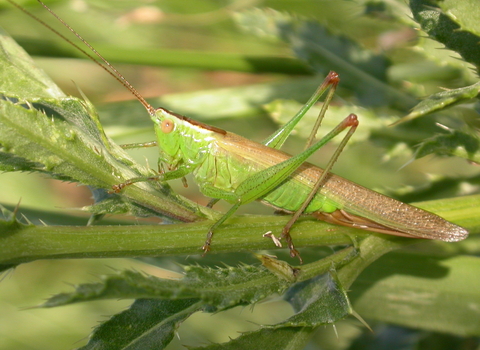
Long-winged Conehead ©Giles San Martin
Long-winged conehead
The long-winged conehead is so-named for the angled shape of its head. It can be found in grasslands, heaths and woodland rides throughout summer.

Long-winged Conehead ©Giles San Martin